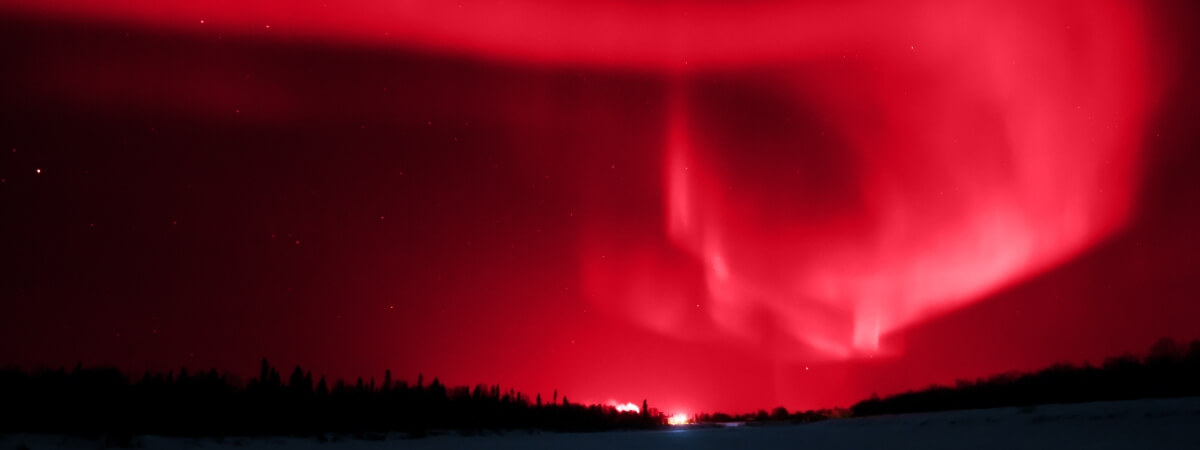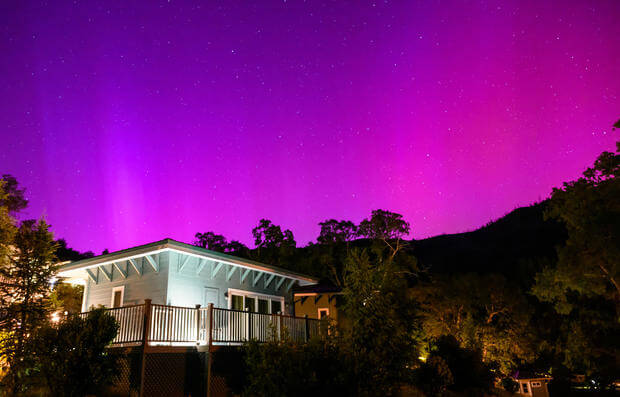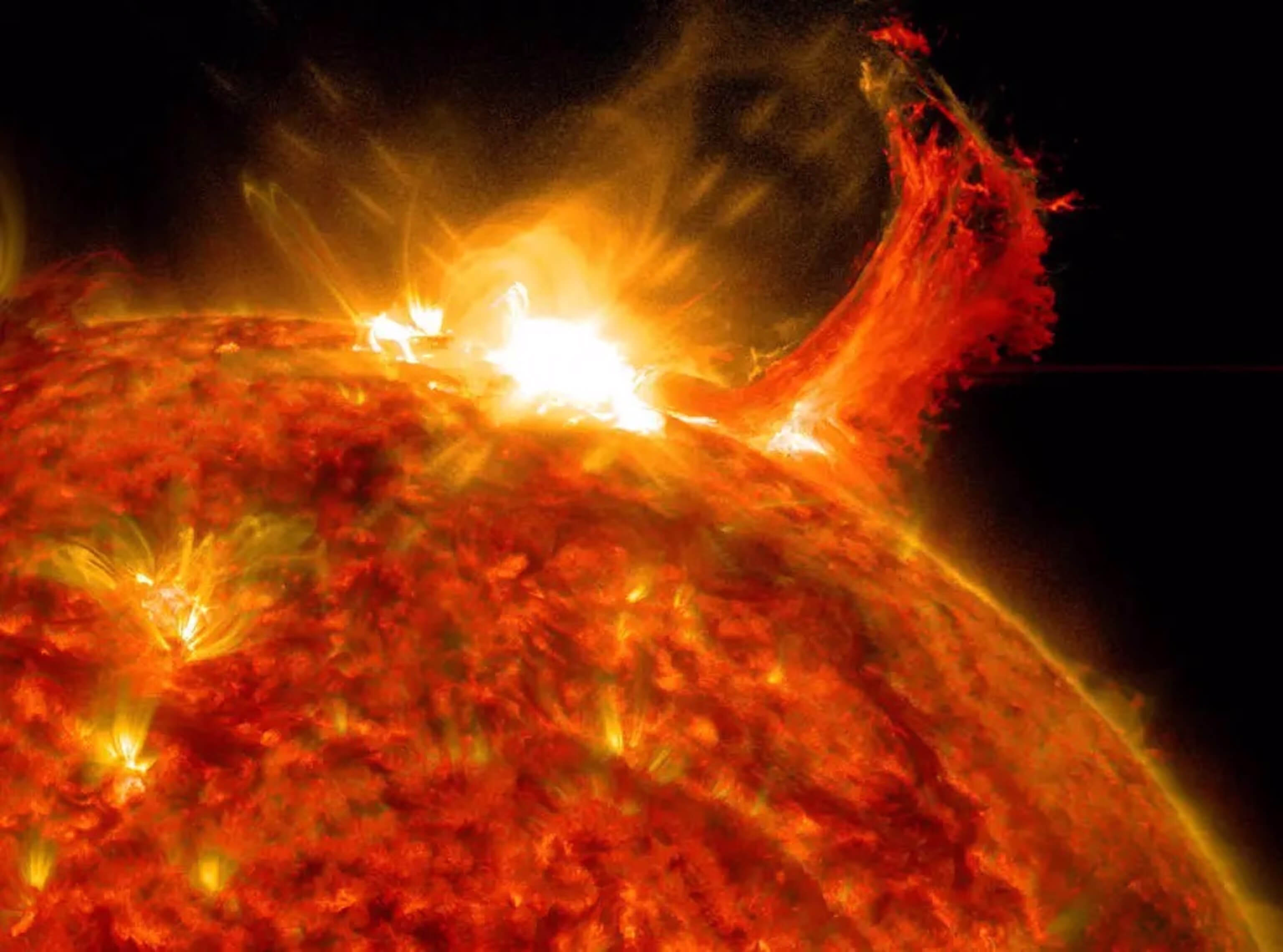Dear colleagues and friends,
At the end of last week, we had the opportunity to learn more about a beautiful phenomenon that appeared unusually in many parts of the world, although unfortunately we could not observe it directly. I am referring to the Auroras.
Consulted ChatGPT, we review, and I share with you, that Auroras are defined as natural phenomena that manifest as bright curtains of light in the sky, visible mainly in the polar regions. These lights can be green, red, yellow, blue, or violet and usually have undulating shapes that change over time.

There are two types of auroras depending on the hemisphere where they occur: the northern lights, which occur in the northern hemisphere, and the southern auroras, visible in the southern hemisphere. The AI platform informs us that auroras are the result of the interaction between the solar wind and the Earth's magnetic field. That is, on the one hand, the Sun continuously emits a flow of charged particles, mainly protons and electrons, known as the solar wind. On the other hand, the Earth is surrounded by a magnetic field, which fortunately for us, protects us from these solar particles. In fact, this field deflects most particles toward the poles. Now, when these charged particles from the solar wind reach Earth's atmosphere, they interact with the atoms and molecules of gases such as oxygen and nitrogen. This interaction excites atoms and molecules, elevating them to a higher energy state. When they return to their normal state, they release the extra energy in the form of light, creating auroras. The different colors of the auroras are a product of the altitude and the type of gas with which the solar particles interact: The most common color is green, which is produced by oxygen atoms at an altitude of about 100-150 km.

Red auroras are produced by oxygen at higher altitudes (above 150 km) or by nitrogen.

And blue and violet auroras, the least common, result from interaction with nitrogen molecules. One of the factors affecting auroras is mainly the level of solar activity. That is, the intensity and frequency of auroras increase during peaks of solar activity, such as solar storms. Another factor is geomagnetism: that is, auroras are more visible near the magnetic poles due to the configuration of the Earth's magnetic field.

The auroras are best seen during winter, on dark, clear nights. Ideal places to observe the Northern Lights include regions such as Norway, Sweden, Finland, Canada, Alaska and Siberia. For the southern aurora, the best places are southern Argentina, Chile, New Zealand and Tasmania. In short, auroras are luminous spectacles caused by the interaction of solar particles with the Earth's atmosphere, which are channeled by the magnetic field to the polar regions. Last Friday, May 10, 2024, meteorologists around the world predicted a “severe” solar storm.

The first of several coronal mass ejections (CME), that is, ejections of plasma and magnetic fields from the Sun, occurred shortly after 16:00 GMT on Friday, according to the Space Weather Prediction Center (SWPC) of the US-based National Oceanic and Atmospheric Administration (NOAA).
CMEs emerged from a huge sunspot cluster that is 17 times wider than our planet. The plasma carried magnetic clouds through interplanetary space that interacted with the Earth's magnetic field. It later became an “extreme” geomagnetic storm, the first since the “Halloween Storms” of October 2003 that caused blackouts in Sweden and damaged electrical infrastructure in South Africa. Friday's storm was in level five of geomagnetic conditions, the highest on the scale. On Saturday, conditions from G3 to G5 were observed and conditions of G4 or higher were forecast for Sunday. But this time it does not appear that major interruptions have been reported in electrical or communication networks, despite initial concerns from the authorities. There have only been “preliminary reports of irregularities in the electrical grid, degradation of high-frequency communications, GPS and possibly satellite navigation,” said the SWPC.Elon Musk, whose satellite Internet operator Starlink has about 5,000 satellites in low Earth orbit, he said that his satellites were “under a lot of pressure, but they resisted without problems.” But as a result of all this solar activity, thousands of people saw amazing displays of auroras from places as low as Mexico, the Bahamas, West Africa, New Zealand, Australia, northern Chile and Argentina. It was wonderful that so many people were able to see it! And the images came in abundance. What nights!
“I have the feeling of experiencing a historic night in France... It was really full of solar particles and emotions,” Eric Lagadec, astrophysicist at the Côte d'Azur Observatory, wrote on social media after the first night.
The Riviera Maya News reported that the views of the Northern Lights extended as far east as the Yucatan Peninsula, where people from Holbox Island witnessed the rare sighting. Northern lights were also reported in Chihuahua, Zacatecas and Sonora.
The natural lighting phenomenon, rarely visible in Mexico, was not as intense as in the United States. Scientists from the Institute of Geophysics of the National Autonomous University of Mexico (UNAM) said that on Sunday afternoon, May 12, 2024, the 39-hour phenomenon had ended, but reported that another solar storm could produce some additional hours of northern lights, although they would be less dramatic. For its part, the World Meteorological Organization (WMO) also said that the current solar storm cycle reached its maximum last week and the predictions of the event proved to be accurate. The weekend spectacle and the dangers involved highlight the importance of forecasting potentially disruptive space weather events, the WOM concluded.

